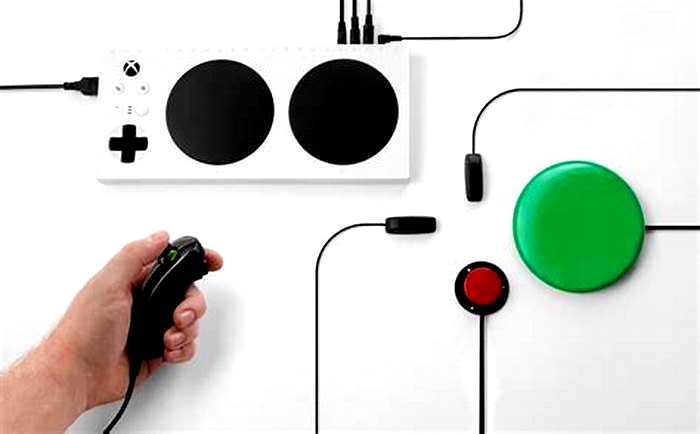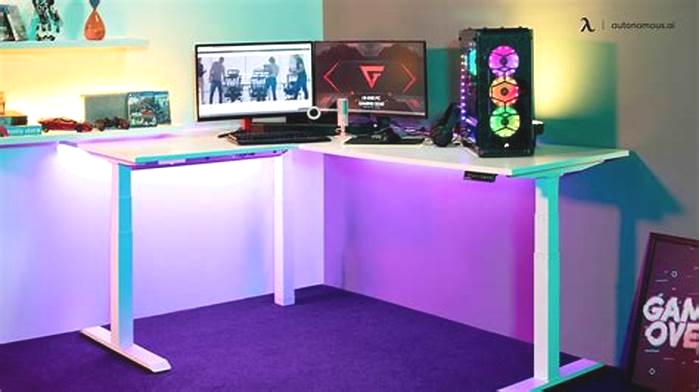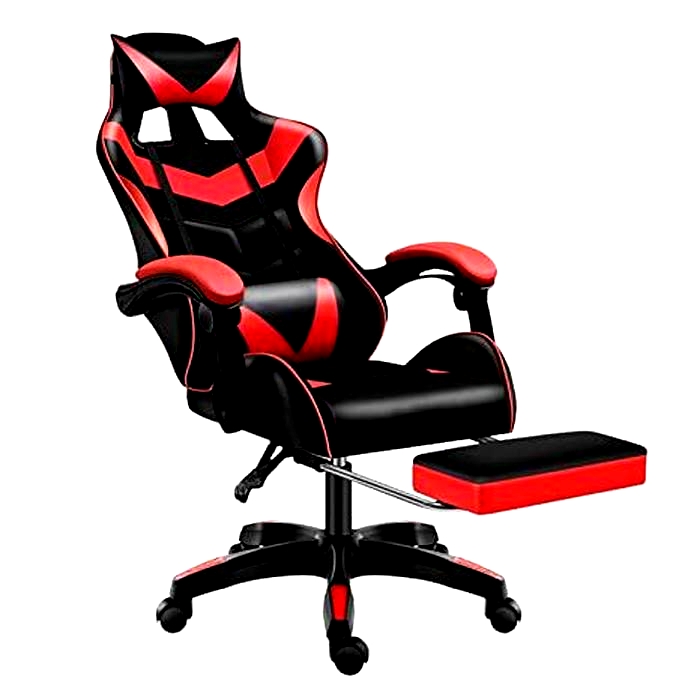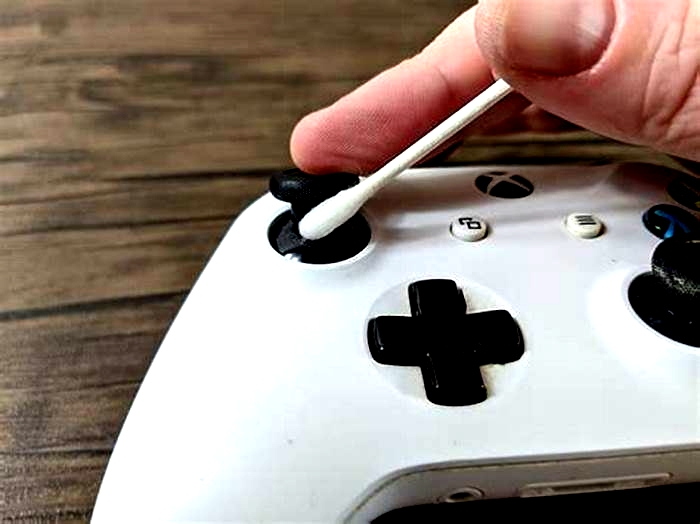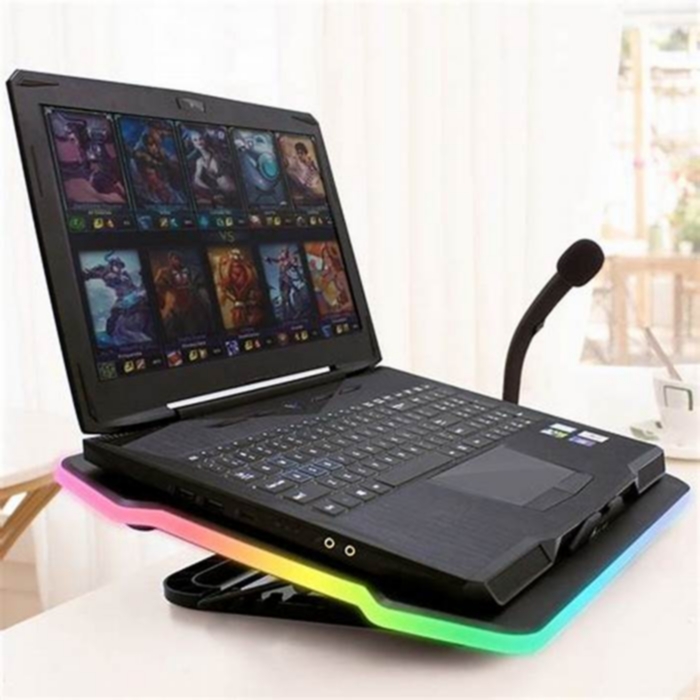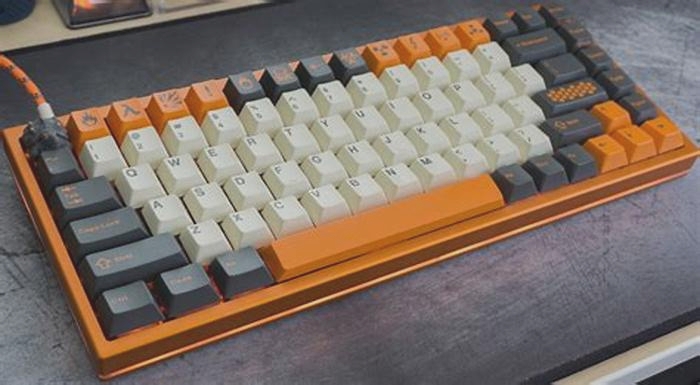Adaptive Gaming Controllers Enhancing Accessibility for Gamers with Disabilities
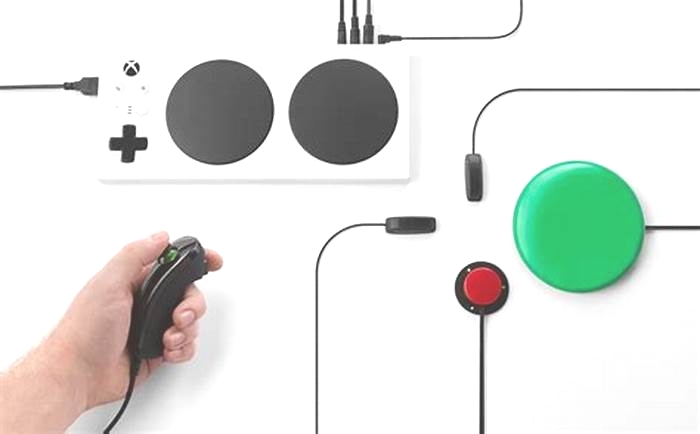
Gaming For All: Accessible Gaming Options for People with Disability
Gaming is a universal pastime that brings joy, excitement, and a sense of community to millions of people worldwide. However, for individuals with disabilities, the world of gaming can sometimes feel inaccessible and exclusive. This is where the importance of accessible gaming comes into play.
Accessible gaming is all about making games more inclusive and enjoyable for everyone, regardless of their physical or cognitive abilities. Its about ensuring that everyone can participate in the gaming world, whether theyre playing a fast-paced action game, a strategic board game, or a social online game.
The importance of accessible gaming extends beyond just the enjoyment of the game itself. For many disabled individuals, gaming can provide a sense of connection and community. It can help combat feelings of social isolation, providing a platform for interaction and engagement with others.
Moreover, gaming can also offer therapeutic benefits. For instance, it can help improve hand-eye coordination, cognitive function, and problem-solving skills. It can also provide a sense of achievement and self-confidence, which can be incredibly empowering for individuals with disabilities.
However, to reap these benefits, games need to be accessible. This means they need to be designed with accessibility in mind, from the controls and user interface to the gameplay mechanics and narrative.
In the world of digital gaming, this could mean providing options for remappable controls, visual and auditory cues, and difficulty settings. In the world of physical gaming, this could mean creating games with large, easy-to-handle pieces, clear instructions, and flexible rules.
Exploring the World of Adaptive Gaming Equipment
As we go deeper in this topic, its essential to highlight the role of adaptive gaming equipment. This specialised equipment is designed to make gaming more accessible and enjoyable for disabled individuals, offering a range of features that cater to various physical and cognitive abilities.
One of the most well-known pieces of adaptive gaming equipment is the Xbox Adaptive Controller. This literally game-changing device, developed by Microsoft, is designed to meet the needs of gamers with limited mobility. It features large programmable buttons and connects to external switches, buttons, mounts, and joysticks, making it highly adaptable and customisable. This means that gamers can create a setup that suits their individual needs and abilities for a more fun and interactive gaming experience.
Another example of adaptive gaming equipment is the Logitech G Adaptive Gaming Kit. This kit is designed to be used with the Xbox Adaptive Controller, offering a range of buttons and triggers that can be customised to the gamers needs. Its a fantastic example of how companies are working together to create more inclusive gaming experiences for its users.
There are also a variety of specialised mouse and keyboard options available, which include one-handed keyboards, an eye-tracking mouse, and voice-controlled gaming systems. These devices can make a significant difference in the gaming experience for disabled individuals, offering them the opportunity to play games that they may have previously found inaccessible.
In addition to these, there are also a range of software solutions like screen readers, text-to-speech software, and game modification tools that allow gamers to customise their gaming experience.
Indeed, the growth in availability and usage of adaptive gaming equipment an exciting area of development that is making gaming more inclusive and accessible for everyone. Whether youre a gamer, a caregiver, or a developer, its worth exploring this world and discovering the incredible innovations that are making a difference in the lives of gamers with disability.
Best Disability-Friendly Video Games
Choosing the right games is as crucial as having the perfect equipment when it comes to creating an inclusive and enjoyable gaming experience for individuals with disabilities. Here are five outstanding video games designed with accessibility in mind:
- The Last of Us Part II This action-adventure game, developed by Naughty Dog, has been widely praised for its comprehensive accessibility features. It offers a variety of options to accommodate different abilities, including remappable controls, visual aids, text-to-speech, and adjustable difficulty settings. It stands as a prime example of how games can be designed inclusively, ensuring enjoyment for all players.
- Sea of Thieves Developed by Rare, this multiplayer pirate adventure game offers several accessibility features. These include a colourblind mode, remappable controls, and adjustable text size. The game also introduces a non-verbal communication system, which uses symbols and gestures for players with hearing impairments, enhancing its accessibility.
- Celeste This platform game features an Assist Mode, allowing players to modify the games difficulty, speed, and controls. This mode makes the game more accessible to players with varying abilities, showcasing how games can adapt to meet the needs of disabled gamers.
- Minecraft A well-known game that provides various accessibility features, including text-to-speech, adjustable text size, and a colourblind mode. Minecrafts universal design allows players of all abilities to enjoy the game.
- Assassins Creed Mirage The most accessible installment in the Assassins Creed series to date. While parkour elements can be challenging, the new Assassins Focus ability allows players to slow down time, easing combat stress. Features like closed captioning and a screen reader provide substantial support for deaf and blind players, respectively. Assassins Creed Mirage is a testament to Ubisofts ongoing commitment to improving accessibility with each new release.
These games are just a few examples of many that are thoughtfully designed with accessibility in mind. They demonstrate that, with the right features and adaptations, video games can be accessible and enjoyable for everyone.
A Closer Look at Gaming Software Designed for Disabilities
Its also essential to take a closer look at gaming software designed specifically for disabilities, offering a range of features that cater to various physical and cognitive abilities.
One of the most prominent examples of this is the Microsoft Xbox Accessibility Guidelines (XAGs). These guidelines provide developers with a comprehensive set of recommendations for making their games more accessible. They cover a range of areas, including visual, auditory, and cognitive accessibility, as well as input and control accessibility. By following these guidelines, developers can ensure that their games are inclusive and enjoyable for everyone.
Another example of gaming software designed for disabilities is the AbleGamers Player Panels. This initiative, developed by the AbleGamers Charity, connects gamers with disabilities with developers and researchers. This allows gamers to provide direct feedback on games and gaming equipment, helping to shape the future of accessible gaming.
There are also a variety of software solutions available that can make gaming more accessible. These include screen readers, text-to-speech software, and game modification tools. For instance, VoiceOver is a screen-reading feature available on Apple devices that can read aloud text and describe visual elements in games. Similarly, NVDA (NonVisual Desktop Access) is a free screen reader for Windows that can help visually impaired gamers navigate games.
In addition to these, there are also a range of game modification tools available that allow gamers to customise their gaming experience. These tools can enable gamers to adjust game settings, controls, and visuals to suit their individual needs and abilities.
The Future of Accessible Gaming
As we look towards the future of accessible gaming, its clear that assistive technology will play a pivotal role. This technology, which includes devices, software, and equipment designed to help individuals with disabilities, is continually evolving and improving, offering new opportunities for inclusivity in the gaming world.
One of the most exciting developments in assistive technology is the use of virtual reality (VR). VR has the potential to create immersive gaming experiences that are accessible to all. For instance, VR games can be designed with adjustable settings, allowing gamers to modify the games speed, difficulty, and controls to suit their individual needs and abilities.
Moreover, VR can provide a sense of immersion and engagement that can be particularly beneficial for individuals with disabilities, offering them a unique and enjoyable gaming experience.
Another promising development is the use of artificial intelligence (AI) in gaming. AI can be used to create adaptive gaming experiences that respond to the gamers abilities and preferences. For instance, AI can adjust the games difficulty level in real-time, provide personalised assistance, and even predict the gamers needs, making the game more accessible and enjoyable.
There are also ongoing developments in the realm of adaptive gaming equipment. Companies like Microsoft are continually innovating and improving their adaptive controllers, making them more adaptable and customisable. Similarly, there are ongoing developments in the realm of specialised keyboards, mice, and other gaming peripherals, making them more accessible and user-friendly.
In conclusion, the future of accessible gaming is bright and full of potential. With the ongoing advancements in assistive technology, we can look forward to a gaming world that is more inclusive, accessible, and enjoyable for everyone. From adaptive gaming equipment to inclusive gaming options and software designed for disabilities, there are numerous ways to make gaming more accessible. Whether youre a gamer, a caregiver, or a developer, understanding and embracing accessible gaming is crucial.
Lets continue to break down barriers and make the gaming world a place where everyone, regardless of their abilities, can play, connect, and thrive.
Adaptive Video Game Controllers Open Worlds for Gamers With Disabilities
Erin Hawley grew up immersed in video games, progressing from Pong on the Atari 2600 to Sonic the Hedgehog on the Sega Genesis to Tomb Raider on the Sony PlayStation.
But as the hand-held controllers became more complex and her muscular dystrophy became more debilitating, she was eventually forced to stop playing console games. Even holding a controller is difficult for Ms. Hawley because of the weight, and her hands are unable to reach certain buttons.
To support gamers with physical disabilities, an industrious community has for years modified existing controllers or devised new ones altogether. And now those efforts, by organizations like Warfighter Engaged, the AbleGamers Charity and SpecialEffect, have been amplified by Microsoft, which in September released an adaptive controller for the Xbox One.
We tried to figure out a way to accelerate their practices so that they could help more people, said Bryce Johnson, Microsofts inclusive lead for product research and accessibility. The idea of cracking open a controller for someone who just needs a couple of extra buttons is an arduous task.
That gray rectangle with two red buttons is a gaming relic. Modern controllers require the player to combine a sweeping legato two analog sticks, one controlling a characters head and one its feet, are used simultaneously with the precise staccato of four buttons, two triggers and two bumpers.
It can be challenging, and especially so for those with physical disabilities. Some e-sports competitors have operated controllers with their lips and chin, or their cheek and tongue. Ms. Hawley, 35, cannot use her index finger to pull the right trigger on the traditional Xbox controller.
Instead she can press an elbow against one of the two four-inch buttons on the adaptive controller, which she tested for Microsoft and which has resurrected a pastime. She now plays games like Mortal Kombat and Kingdom Hearts with her brother and her niece every Sunday.
The power of the adaptive controller stems from its 19 3.5-millimeter input jacks and two USB ports, which enable users to plug in peripherals like external switches and buttons. Many players share intel about setups to accommodate specific physical needs.
A lot of my friends, it just changed how they gamed, said Ms. Hawley, who created the Geeky Gimp website, which examines how the entertainment industry portrays disabilities. And its also changed how they engage in the community.
Powerful and reliable hardware is foundational for the video game industry, which generated an estimated $134.9 billion the vast majority of its revenue in software sales last year, according to the analyst group Newzoo.
Computer gaming has long had an ethos of customization, and Ms. Hawley turned there during the six years she did not play console games. She can operate a keyboard and mouse, and people without use of their hands can benefit from eye-tracking and voice commands.
But console developers design their products for the masses, and people with disabilities had long been overlooked. In 1989, Nintendo released a hands-free controller that players operated with their chins while blowing into and sucking from a tube, but for decades the market was ceded to external creators.
It takes Benjamin J. Heckendorn about three hours to create a dozen parts on a 3-D printer and screw them to the bottom of a traditional Xbox controller. The first one-handed controller he built was for a veteran who had lost an arm in the Iraq War; he has sold about 250 since for $350 each, many to customers who have had strokes or been in motorcycle crashes.
Part of the recovery process is doing the normal things in life you love, Mr. Heckendorn said, and for an increasing number of people, thats video games.
The Adroit Switchblade, a $400 black box sprinkled with ports to plug in auxiliary controls, was a precursor to Microsofts adaptive controller. It truly was a person sitting there all day soldering wires together and testing it, said Mark Barlet, the founder of AbleGamers, which teamed up with Evil Controllers to distribute about 220 Switchblades.
Microsofts adaptive controller was envisioned at an internal hackathon in 2015, and refined in consultation with nonprofits and hospitals. Its reach was extended by the cost savings of mass production and an advertising budget large enough to air a Super Bowl commercial.
Keeping the controller reasonably priced was important to Microsoft, Mr. Johnson said. It costs $100, but maximizing its potential unlike the traditional $60 controller, it does not come with analog sticks or rumble packs, which vibrate to provide tactile feedback will require a larger investment. On its website, Microsoft lists third-party attachments ranging from a $20 foot pedal to a $550 mouth-operated joystick.
The controllers versatility, Mr. Johnson said, may also make it attractive to professional gamers who value any technical advantages. And accessibility is expected to become more important to the gaming industry as an aging user base faces more physical limitations, including loss of fine motor skills, vision and hearing.
Most games now let players wholly remap controllers so any in-game action, such as reloading a weapon, can be assigned to any physical input. Recent blockbuster titles like Uncharted 4: A Thiefs End and Shadow of the Tomb Raider allow players to navigate using only one of the two analog sticks, and Microsoft has introduced a co-pilot feature that allows two controllers to act as one.
The increased commitment to accessibility has benefited people who frequently turn to video games as a respite from the physical demands and social pressures of the real world.
If youre on the streets, everyone knows youre a profoundly disabled individual, Mr. Barlet said. You cant hide this fact. But in a video game, youre a player. We all jump into video games for some level of fantasy.

